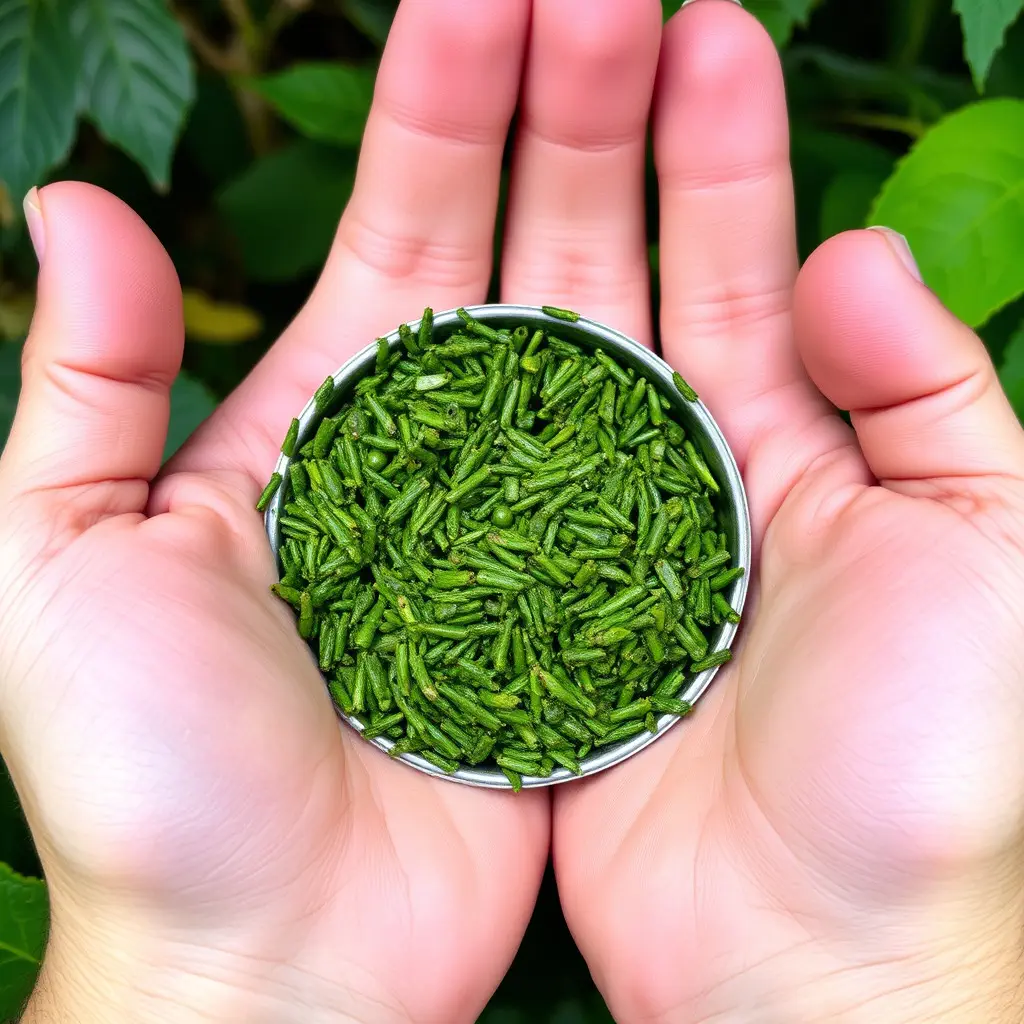Kratom, a botanical extract from the Mitragyna speciosa tree, has garnered attention in the realm of natural remedies for chronic pain. Its potential to alleviate discomfort without the dependency and side effects often associated with prescription opioids is a subject of growing interest among healthcare consumers and professionals alike. This article delves into how Kratom might serve as an alternative to traditional pharmaceuticals, offering insights into its role in managing persistent pain. We will explore the scientific basis for Kratom’s analgesic properties, compare its efficacy with that of prescription painkillers, and discuss considerations for those exploring this option for chronic pain management.
- Understanding Kratom's Role in Chronic Pain Management
- The Science Behind Kratom's Analgesic Effects
- Kratom vs. Prescription Painkillers: A Comparative Analysis for Chronic Pain Sufferers
Understanding Kratom's Role in Chronic Pain Management

Kratom, a plant native to Southeast Asia, has garnered attention in the realm of alternative pain management strategies, particularly for those suffering from chronic pain. The leaves of the kratom plant contain compounds called alkaloids, which can interact with the brain and nervous system, potentially providing pain relief. For individuals coping with chronic pain, the use of kratom may offer a natural alternative to traditional opioid-based medications, which often come with significant side effects and the risk of addiction. The efficacy of kratom in managing chronic pain is attributed to its dual action: it can both stimulate and sedate, depending on the dose. At lower doses, kratom is known to elevate mood and increase energy levels, while higher doses can induce a calming effect and alleviate discomfort.
Research into kratom’s effects on chronic pain is ongoing, with studies exploring its potential benefits and risks. While some preliminary research suggests that kratom may be effective in reducing pain and improving quality of life for chronic pain patients, it is crucial to approach its use with caution. The regulatory status of kratom varies by region, and its safety profile remains a topic of debate among healthcare professionals. Users should be informed of the potential for adverse effects, including dependence and withdrawal symptoms. As such, any consideration of incorporating kratom into chronic pain management should be done in consultation with a healthcare provider, who can provide guidance based on an individual’s specific health needs and legal restrictions in their area.
The Science Behind Kratom's Analgesic Effects

Kratom, a tropical evergreen tree native to Southeast Asia, has been the subject of increasing interest within the realm of natural pain management. Its leaves contain a complex blend of alkaloids, with mitragynine and 7-hydroxymitragynine being the most prominent. These compounds are believed to interact with opioid receptors in the brain, thereby modulating pain perception. The analgesic effects of kratom have been traditionally utilized by individuals suffering from chronic pain, offering a potential alternative to prescription opioids. Scientific studies suggest that kratom may influence the body’s pain response by binding to mu-opioid receptors, similar to opiate drugs, but without the same level of sedation or euphoria, potentially reducing the risk of addiction and overdose. Furthermore, kratom’s action on these receptors may also enhance the release of certain neurotransmitters like dopamine and norepinephrine, which could contribute to its pain-relieving properties. As research continues, the potential for kratom as a component of chronic pain management regimens is becoming an increasingly discussed topic among healthcare professionals and patients seeking natural alternatives to manage their discomfort.
Kratom vs. Prescription Painkillers: A Comparative Analysis for Chronic Pain Sufferers

Kratom, a natural substance derived from the leaves of the Mitragyna speciosa tree, has emerged as an alternative option for individuals managing chronic pain. Unlike traditional prescription painkillers, which are often opioids and carry significant risks of dependency and overdose, kratom interacts with the body’s opioid receptors to alleviate pain without the need for powerful synthetic drugs. For chronic pain sufferers, the potential for kratom to provide relief without the high risk of addiction associated with prescription opioids is particularly appealing. While research on kratom is still evolving, anecdotal evidence and some clinical studies suggest that it may effectively manage certain types of chronic pain.
Moreover, kratom’s effects are not limited to pain relief; it can also influence mood and energy levels due to its various alkaloids, such as mitragynine and 7-hydroxymitragynine. This dual effect makes it a more holistic option for those whose chronic pain also affects their mental well-being. However, it is crucial for individuals considering kratom as part of their pain management strategy to approach it with caution. The regulation and quality control of kratom products are inconsistent, which can lead to variable effects and potential health risks. Therefore, before making any changes to pain management plans, especially if currently using prescription painkillers, it is advisable to consult healthcare professionals who can provide guidance tailored to the individual’s specific health needs and circumstances.
In conclusion, the potential of Kratom as a natural alternative in chronic pain management offers a promising avenue for those seeking relief beyond conventional pharmaceuticals. The scientific evidence supporting its analgesic properties provides a compelling case for considering Kratom as part of a comprehensive pain management strategy. While it is crucial to approach any such treatment with caution and under professional guidance, the comparative analysis between Kratom and prescription painkillers highlights its role in reducing dependency on synthetic opioids. As research continues to evolve, so too does the understanding of how Kratom can be integrated into pain management practices responsibly and effectively. It is a field worthy of further investigation, offering hope for many who navigate the challenges of chronic pain.






